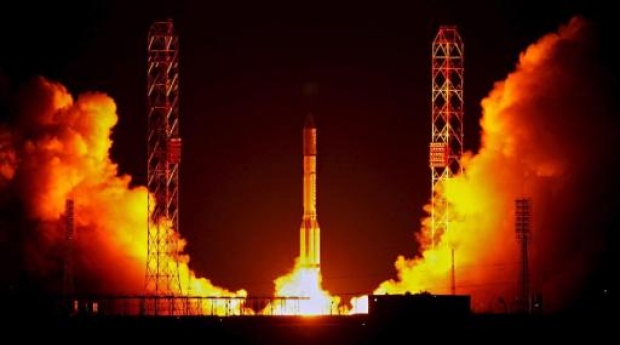
IRNSS 1-A successfully launched: Indian Regional Navigation Satellite System project begins!
A decade ago, Scientists at the Indian Space Research Organization (ISRO) were starting to explore the possibility of having an Indian alternative to the GPS system, at least at a regional scale. A dream and a vision by the world’s largest democracy to have its own satellite navigation system is now taking shape in the form of ” The Indian Regional Navigation Satellite System (IRNSS) “
The first satellite of the 7 satellite constellation, IRNSS 1A has been launched successfully from Sathish Dawan Space Centre, Sriharikota. It was a perfect launch during the midnight of July 1st! IRNSS 1-A is officially India’s first dedicated Navigation Satellite! ISRO’s Polar Satellite Launch Vehicle, PSLV – 22 successful placed IRNSS 1-A in its orbit, the launch vehicle was previously used for launching Chandrayaan -1 (India’s Moon Mission).
IRNSS is only a regional navigation satellite and will in no way be a direct competitor to the Global Navigation Satellite Systems like GPS or GLONASS. India has already launched its own SBAS system in GAGAN (GPS Aided Geo Augmented Navigation) and the latest regional navigation satellite system is only going to help the GNSS Industry in the country grow. The design of IRNSS allows for an additional 3 satellites to be added to the original 7 satellites that are planned to be set into orbit by the end of 2015. However it would not be possible for the system to be converted into a Global system in the future. With launch failures of GLONASS satellites, it looks like GPS is set to be the standard for the time being, Beidou from China being the only realistic competition that can arise in the future with GALILEO struggling to move forward.
A picture says a thousand words and a documentary tells you the entire story.
If you are interested in having a closer look at the tech specs and other IRNSS information – here’s the link
For a country that became Independent during Midnight, it is rather fitting that its first major step in navigation satellite system should arrive on the midnight of July 1st!
Kudos ISRO! The Indian Regional Navigation Satellite System project is now underway!
Did you like this post? Read more and subscribe to our monthly newsletter!









